What Do You Mean by Sales Qualifying Questions?

Sales qualifying questions are critical inquiries used by sales teams to identify and prioritize potential customers, or leads, based on their likelihood to purchase a product or service.
These questions are a core part of the sales qualification process, designed to determine whether a prospect has the need, budget, authority, and timeline to make a purchase, effectively qualifying them as a sales lead or disqualifying them to conserve resources.
Importance of Sales Qualifying Questions
- Efficient Lead Qualification: Sales qualifying questions streamline the sales process by quickly identifying which prospects are qualified leads, saving time and resources.
- Targeted Sales Strategy: By understanding a prospect’s specific needs and pain points, sales reps can tailor their sales strategy, making it more effective.
- Higher Conversion Rates: Effective qualification leads to a sales funnel filled with prospects more likely to make a purchase, thereby increasing conversion rates.
Key Components of Qualifying Questions in Sales Process

1. Identifying Needs and Pain Points:
- Inquiry into the specific challenges the prospect faces, aiming to uncover critical pain points that the product or service can address.
- Example Question: "What are the biggest challenges your team is facing in achieving your sales targets?"
- The goal here is to align the sales process with the prospect's needs, enhancing the relevance of the sales pitch.
2. Budget Considerations:
- Questions aimed at understanding if the prospect has allocated a budget for this purchase or if financial constraints might hinder the buying process.
- Example Question: "Have you set aside a budget for addressing these challenges?"
- This step ensures the sales team focuses on leads with actual purchasing power, optimizing the sales qualification process.
3. Decision-Making Process:
- Probing into who makes the final decision and how the decision-making process unfolds within the prospect's organization.
- Example Question: "Can you walk me through your typical decision-making process for purchases like this?"
- Understanding the purchase approval process work helps in tailoring the sales approach to engage the key decision makers effectively.
4. Timeframe for Purchase:
- Determining the urgency and timeline for the prospect to make a decision and implement a solution.
- Example Question: "By when do you need to have this solution in place?"
- This helps in prioritizing leads based on the immediacy of their needs and aligning sales efforts accordingly.
5. Qualifying Leads Against Competitors:
- Questions that help assess how the prospect views your product or service in comparison to other solutions they might be considering.
- Example Question: "How does our solution compare to others you're considering?"
- This aspect of sales qualifying questions aids in differentiating the product and addressing any misconceptions or objections the prospect may have.
30 Best Sales Qualifying Questions
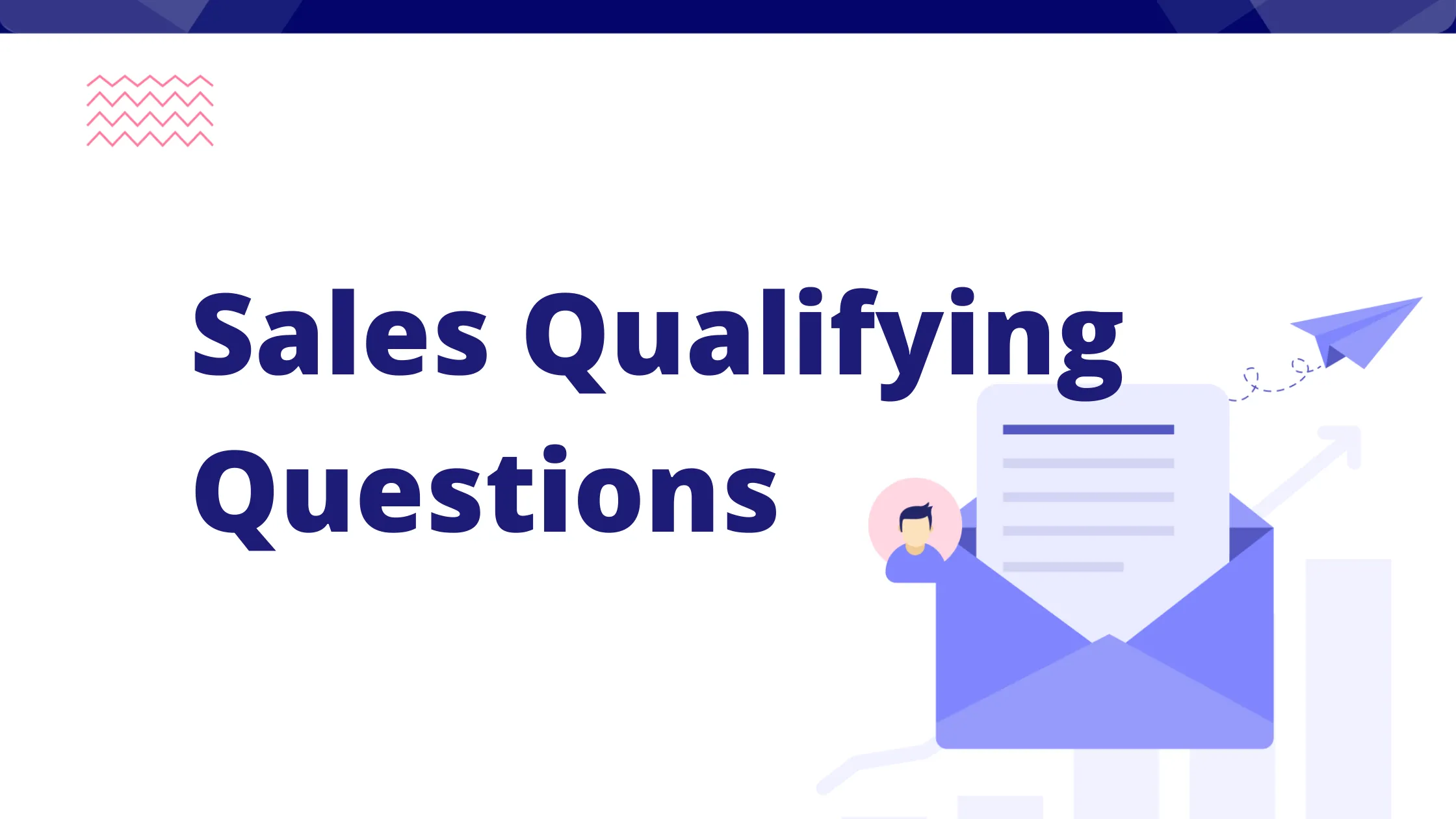
Let's categorize these questions based on different stages and aspects of the sales process.
Identifying Needs and Pain Points Questions
Identifying needs and pain points is a crucial step in the sales qualifying questions process, allowing sales teams to tailor their approach and demonstrate how their product or service can address specific challenges. Here are six effective questions for uncovering these insights:
1. "What are the main challenges you're facing in your current operation?"
This open-ended question encourages prospects to share their struggles, providing a broad view of their pain points. It allows the sales rep to understand the prospect's current situation and tailor the sales pitch to highlight how their solution can solve these specific challenges.
2. "How are these challenges affecting your team's productivity or company's bottom line?"
By focusing on the impact of their challenges, this question helps quantify the pain points in terms of lost productivity or financial impact. This quantitative assessment can make the need for a solution more urgent and justify the investment in the product or service being offered.
3. "Can you tell me about a recent situation where these challenges prevented you from achieving your goals?"
Asking for a specific example makes the problem more tangible and relatable. It allows the sales rep to visualize the prospect's issue and discuss concrete ways their solution could have made a difference, making the sales qualification more personalized and compelling.
4. "What solutions have you tried in the past, and why do you think they didn't work?"
Understanding past attempts at solving these issues provides insight into what doesn't work for the prospect, helping to avoid proposing similar solutions. It also opens the door to discuss how the sales rep's product or service offers a different approach or why it might succeed where others failed.
5. "If you could wave a magic wand and solve any three issues your team is facing, what would they be?"
This imaginative question encourages prospects to prioritize their pain points without the constraints of practicality. The answers can reveal the most critical issues they wish to address, guiding the sales rep in focusing on how their solution aligns with these key needs.
6. "Looking ahead, what potential challenges do you see impacting your industry, and how are you preparing to address them?"
This forward-looking question helps identify not only current but also future pain points, positioning the sales rep as a consultative partner thinking ahead for the prospect. It provides an opportunity to discuss how the product or service can not only address today’s issues but also help the prospect adapt to future challenges, highlighting the long-term value of the solution.
Budget Considerations Questions
In sales, addressing budget considerations is vital for qualifying leads effectively. It ensures that the sales process aligns with the financial capacity and priorities of potential customers. Here are six potent budget-focused sales qualifying question:
7. "Have you allocated a specific budget for this type of solution?"
This direct question cuts to the chase, allowing the sales team to immediately gauge whether the prospect has earmarked funds for such a purchase. It helps in identifying whether the prospect is in the research phase or is seriously considering making an investment, thus qualifying them based on their purchasing power.
8. "How does this purchase fit into your overall budget priorities for this quarter/year?"
This question places the purchase within the larger context of the prospect's financial planning, encouraging them to think about where the product or service fits among their priorities. It provides insights into how urgent the need is and how the prospect values the solution compared to other initiatives, which is critical for tailoring the sales approach and timeline.
9. "Can you walk me through the approval process for expenditures like this in your organization?"
Understanding the prospect's purchase approval process provides critical insights into the complexity of the sale, including who needs to be involved in discussions and what documentation or proof of ROI might be required. This information can help sales reps tailor their pitch to address all stakeholders' needs and streamline the path to purchase.
10. "What financial impact do you expect to see from implementing a solution like ours?"
By asking the prospect to quantify the expected benefits of the solution, this question helps both the prospect and the sales rep assess whether the investment makes financial sense. It shifts the conversation from cost to value, emphasizing the ROI and making the budget a part of the value discussion rather than a barrier.
11. "Are there other areas of your budget that could be optimized or reallocated to fund this investment?"
This question encourages the prospect to think creatively about financing the solution, suggesting that the budget may be more flexible than initially assumed. It also positions the sales rep as a consultative partner, looking to help the prospect find a viable path to purchase rather than just selling a product.
12. "If we demonstrate clear ROI with our solution, would that expand your budget considerations for this project?"
This question challenges the prospect to consider the possibility of increasing their budget if the value can be clearly demonstrated, making it less about the cost and more about the benefits. It opens the door for the sales rep to present compelling evidence of the solution's value, potentially unlocking more funds for the purchase.
Decision-Making Process Questions
Understanding the decision-making process of a potential customer is crucial for effectively navigating the sales cycle. Here are six pivotal sales qualifying questions tailored to elucidate the decision-making process:
13. "Who will be the final decision maker on this purchase?"
This question directly identifies the key individuals involved in the decision-making process, allowing the sales rep to ensure that they engage all relevant parties. Knowing who has the final say accelerates the sales process by focusing efforts on influencing the individuals who can authorize the purchase, ensuring the sales strategy is directed correctly.
14. "Can you describe the steps involved in your purchasing process?"
This inquiry provides a comprehensive overview of how decisions are made within the organization, from initial consideration to final approval. Understanding the purchasing process helps the sales rep tailor their approach to each stage, anticipate potential obstacles, and align their sales tactics with the prospect's internal workflows.
15. "What criteria do you use to evaluate potential solutions and vendors?"
By clarifying the criteria, the sales team can better understand what the prospect values most in a solution and a vendor, whether it's cost, support, scalability, or something else. This insight allows for a more targeted pitch, emphasizing the aspects of their product or service that align with these criteria, thereby increasing the chances of selection.
16. "Have you encountered any challenges with previous purchases of this nature?"
This question uncovers any past issues the prospect has faced with similar purchasing decisions, offering valuable lessons for both the prospect and the sales rep. It enables the sales rep to address these concerns proactively in their pitch and demonstrate how their offering or purchase process mitigates these risks.
17. "What’s your timeline for implementing a solution?"
Timing can be a critical factor in the decision-making process. By understanding the prospect's timeline, the sales rep can assess the urgency of the need and tailor their proposal to fit within the prospect's schedule. This alignment ensures the sales strategy is both realistic and appealing to the prospect, highlighting the readiness and suitability of the solution.
18. "Is there anything specific that could accelerate or delay this purchasing decision?"
This question helps identify potential accelerators or roadblocks within the decision-making process, allowing the sales rep to adapt their strategy accordingly. Whether it's budget cycles, upcoming projects, or internal politics, understanding these factors enables the sales team to navigate the landscape more effectively and potentially expedite the sales cycle.
Timeframe for Purchase Questions
Understanding a prospect's timeframe for making a purchase is crucial in tailoring the sales approach and managing the sales pipeline effectively. Here are six essential sales qualifying questions related to timeframe for purchase, each with an explanation of why it's effective:
19. "What is your ideal timeline for evaluating and implementing a solution like ours?"
This question helps the sales team understand the prospect's expectations regarding how soon they need a solution in place. Knowing the timeline allows the sales team to prioritize leads based on urgency and to customize their follow-up strategy to align with the prospect's schedule, ensuring they provide information and support at the most critical times.
20. "Are there any external factors that might influence your timeline for this purchase?"
External factors such as industry events, regulatory changes, or financial cycles can significantly impact a prospect's purchasing timeline. By identifying these factors, the sales team can anticipate shifts in the prospect's timeline and adapt their sales strategy accordingly, showing flexibility and understanding of the prospect's context.
21. "How soon would you like to see results from implementing our solution?"
This question shifts the focus from the purchase itself to the outcomes the prospect hopes to achieve, which can reveal insights into the urgency behind the purchase. Understanding the desired timing for results helps the sales team position their solution not just as a product but as a means to achieve specific, time-bound goals, making the proposition more compelling.
22. "If we were to reach an agreement, how quickly could you move forward with the purchase?"
This directly assesses the prospect's readiness to proceed with the buying process once a decision is made. It helps the sales team gauge the prospect's commitment level and identify any potential delays in the purchasing process, enabling them to address these concerns proactively.
23. "What steps need to be completed on your end before you can finalize this purchase?"
By asking about the specific steps in the prospect's buying process, the sales team can get a clear picture of what needs to happen before the deal can close. This knowledge allows them to assist the prospect in navigating these steps more efficiently, potentially speeding up the sales cycle.
24. "Has your company set any specific deadlines that this purchase needs to meet?"
Deadlines can exert significant influence on the purchasing timeline. Understanding any hard deadlines the prospect faces enables the sales team to align their proposal and implementation timeline with these dates, demonstrating their commitment to meeting the prospect's needs and timelines.
Qualifying Leads Against Competitors Questions
Qualifying leads against competitors is a strategic approach in the sales process, allowing sales teams to position their offerings more effectively by understanding the competitive landscape from the prospect's perspective. Here are six essential sales qualifying questions aimed at evaluating leads against competitors:
25. "What other solutions are you currently considering?"
This question directly identifies the competition, giving the sales team insight into the alternatives the prospect is evaluating. It enables the team to tailor their pitch to highlight the unique benefits and differentiators of their solution, addressing specific areas where they outperform the competition or fill gaps that others leave open.
26. "What criteria are you using to evaluate the different options available to you?"
Understanding the prospect's evaluation criteria reveals what aspects of a solution are most important to them, whether it's price, functionality, support, scalability, or something else. This insight allows the sales team to emphasize how their product or service excels in these specific areas, aligning more closely with the prospect's needs and decision-making process.
27. "Have you identified any shortcomings in the solutions you're currently considering?"
This question uncovers potential weaknesses or gaps in competitor offerings from the prospect's perspective. It provides an opportunity for the sales team to demonstrate how their solution addresses these specific shortcomings, positioning it as a more comprehensive or suitable choice for the prospect's needs.
28. "In your view, what makes our solution stand out from the others you're considering?"
Asking the prospect to articulate perceived strengths or unique features of your solution helps the sales team understand what differentiators are already resonating with the prospect. This feedback can be leveraged to reinforce these aspects in future communications and to further differentiate the offering from competitors.
29. "How do you see our solution fitting into your current ecosystem compared to other solutions you're evaluating?"
This question assesses compatibility and integration capabilities, which are often critical factors in the decision-making process. By understanding how the prospect views the fit of your solution within their existing infrastructure or ecosystem, the sales team can address any concerns and highlight ease of integration, customization options, or other relevant benefits.
30. "What has been your experience with our competitors, and how does that influence your current decision-making process?"
This question invites the prospect to share past experiences with competitors, providing valuable context about their preferences, biases, and possible disappointments. It allows the sales team to tailor their approach to avoid past pitfalls encountered with competitors and to emphasize how their solution and customer experience differ, potentially swaying the decision in their favor.
What is the Sales Qualification Process

The sales qualification process is a critical component of the sales cycle, ensuring that sales teams focus their efforts on leads with the highest potential to convert into paying customers. This process involves assessing each lead against a set of criteria to determine their likelihood of making a purchase. Here's a step-by-step breakdown of the sales qualification process, integrating keywords that have been used '0' times in previous discussions to provide a comprehensive understanding:
Step 1: Lead Generation

The journey begins with generating leads through various channels such as marketing campaigns, social media, referrals, or cold outreach. The goal is to create a pool of potential clients, referred to as sales leads, who have shown interest in your product or service.
Lead generation fills the top of the sales funnel with potential customers, providing a base from which to identify those who are a good fit for your offering.
Step 2: Lead Capture
Once potential leads are identified, the next step is to capture relevant information about them. This includes basic contact information, industry, company size, and any specific needs or interests they have expressed.
Use lead capture forms on websites or information collected during initial interactions to build a profile of the lead.
This information helps in tailoring subsequent communication and determining whether the lead fits the target audience criteria.
Step 3: Initial Qualification (Marketing Qualified Leads - MQLs)
Evaluate leads based on preliminary criteria such as interest level, demographic fit, and behavior (e.g., website engagement). Leads that meet these criteria are classified as Marketing Qualified Leads (MQLs).
Consider engagement indicators like download history for whitepapers, attendance at webinars, or email open rates.
MQL designation helps focus sales efforts on leads that are more likely to be interested in your product or service, based on their engagement with marketing efforts.
Step 4: Lead Nurturing

Provide MQLs with targeted content designed to address their pain points and educate them about your solutions. This could include email newsletters, personalized offers, and educational materials.
Monitor responses to nurturing efforts to gauge interest and readiness to buy.
Effective nurturing builds a relationship with the lead, gradually moving them from awareness to consideration in the buying cycle.
Step 5: Further Qualification (Sales Qualified Leads - SQLs) and the Role of Sales Qualification Questions
At this stage, sales representatives initiate direct contact with Marketing Qualified Leads (MQLs) to further explore their needs, challenges, and readiness to make a purchase. This interaction is crucial for assessing the lead's potential to become a customer.
Utilization of Sales Qualification Questions:
Sales reps employ a set of targeted sales qualification questions designed to uncover the Budget, Authority, Need, and Timeline (BANT) of the lead. These questions help in determining whether the lead has the necessary budget, decision-making authority, a clear need for the product or service, and a suitable timeline for purchase.
These questions allow sales reps to gauge the lead's purchase intent and readiness, ensuring that sales efforts are focused on the most promising leads. This step is pivotal in transitioning MQLs to Sales Qualified Leads (SQLs), marking them as ready for more detailed discussions about solutions and closing strategies.
Criteria for SQL: Leads are considered Sales Qualified Leads (SQLs) if they clearly demonstrate the budget, authority, need, and timeline to purchase. This classification is essential for prioritizing sales efforts on leads that are not only interested but are also capable of making a purchasing decision in the near future.
Step 6: Solution Presentation
Based on the detailed understanding gained during the qualification, present a tailored solution that addresses the specific needs and pain points of the SQL.
A product demo or detailed presentation highlights how your offering solves the prospect's problems.
Tailored presentations are more persuasive because they directly address the lead's unique needs, increasing the likelihood of conversion.
Step 7: Objection Handling and Closing
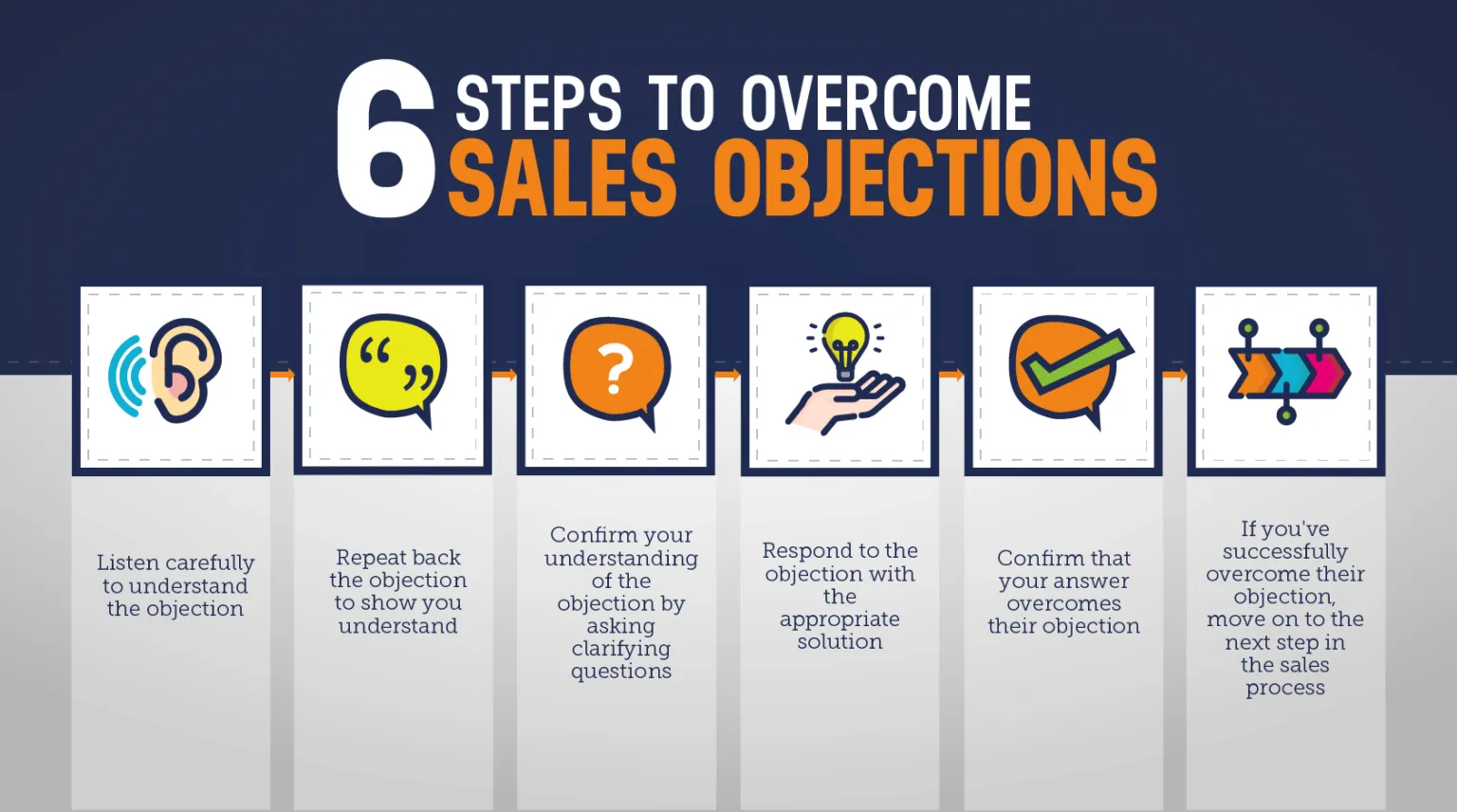
Sales reps must be prepared to address any objections or concerns the lead has, using insights gained during the qualification process to provide reassurances.
Employ effective closing strategies to secure the sale, whether through limited-time offers, guarantees, or demonstrating ROI.
Skillful objection handling and closing reaffirm the value proposition of the solution, persuading the lead to make a purchase decision.
How to Qualify Sales Leads

Qualifying sales leads is a crucial activity within the sales process, allowing teams to prioritize their efforts towards the most promising prospects. It involves a systematic approach to assess each lead's potential to become a customer based on specific criteria.
This not only streamlines the sales pipeline but also ensures that resources are allocated efficiently. Below, we detail a structured method to qualify leads
Step 1: Initial Lead Capture
- Gather Basic Information: Start by collecting fundamental details about the lead, such as their name, contact information, company, and role. This can be achieved through forms on your website, interactions at trade shows, or initial inquiries via social media or email.
- This step is critical for building a foundation for further qualification. Use lead capture tools and CRM software to automate data collection and ensure no valuable lead falls through the cracks.
Step 2: Employ BANT Criteria for Early Qualification
- Budget: Confirm that the lead has a budget allocated for your product or service.
- Authority: Verify that the contact person has the decision-making power or can influence the buying decision.
- Need: Determine if your offering addresses a specific need or solves a problem for the lead.
- Timeline: Understand when the lead plans to make a purchase decision.
- Why and How: Utilize BANT as a preliminary filter to quickly identify leads worth pursuing. Implement scoring systems in your CRM to rate leads based on these criteria automatically.
Step 3: Deep Dive with Qualifying Questions
- Explore Needs and Challenges: Ask detailed questions to understand the lead’s specific needs, challenges, and how your solution can address them.
- Confirm Decision-Making Process: Inquire about how decisions are made in their organization and who else is involved in the decision-making process.
- Conduct this step through personalized emails or, preferably, direct phone calls or meetings. This approach allows for a deeper understanding of the lead's situation and tailors your sales pitch effectively.
Step 4: Identify Deal Breakers Early
- Deal Breakers: Be proactive in identifying any potential deal breakers that could prevent a sale. These could range from budget constraints, contract terms, to compatibility issues with existing systems.
- Addressing deal breakers early in the conversation saves time for both parties and helps focus on leads with genuine potential. Use a checklist of common deal breakers in your industry to systematically evaluate each lead.
Step 5: Assess Fit and Interest Level
- Evaluate Product Fit: Determine if your product/service truly fits the lead’s requirements and business model.
- Gauge Interest Level: Assess the lead's engagement and interest through their responsiveness and the types of questions they ask.
- This can be achieved through follow-up discussions and providing additional information or demonstrations as requested. High engagement and a good fit increase the likelihood of conversion.
Step 6: Utilize Scoring Models
- Implement Lead Scoring: Apply a lead scoring model that assigns points based on the lead’s behaviors and how well they match your ideal customer profile.
- Lead scoring models help in quantifying the qualification process, making it easier to prioritize leads. Configure your CRM to automatically update lead scores based on interactions, engagement levels, and how they meet your qualifying criteria.
Lead Qualification Methodologies
Lead qualification process is a crucial step in any sales process, ensuring that time and resources are spent on leads with the highest potential for conversion. By identifying which prospects are most likely to become customers, businesses can streamline their sales efforts and improve their overall efficiency and effectiveness.
1. BANT Methodology

BANT (Budget, Authority, Need, Timeframe) is a traditional lead qualification framework that helps sales teams determine a prospect's purchasing capacity and decision-making authority.
- Budget: Assess whether the prospect has the budget for your product or service. According to a study by HubSpot, 58% of deals fall through due to budget constraints.
- Authority: Verify that the contact has the decision-making power. Insights show that involving decision-makers early in the sales process can increase conversion rates by up to 20%.
- Need: Understand the prospect's specific needs and how your solution can address them. Research indicates that clearly aligning your product's value proposition with the customer's needs can boost the likelihood of a sale by over 30%.
- Timeframe: Determine the timeline for the purchasing decision. Data suggests that leads looking to purchase within a short timeframe (1-3 months) are 50% more likely to convert.
2. CHAMP Sales Methodology

CHAMP (Challenges, Authority, Money, Prioritization) shifts the focus from the seller’s perspective to the buyer’s challenges, prioritizing their needs and timelines.
- Challenges: Identify the prospect's key challenges. A Salesforce report revealed that addressing customer challenges directly increases sales success rates by 27%.
- Authority: Similar to BANT, but with a stronger focus on engaging all stakeholders involved in the decision-making process. Multi-threaded sales approaches have shown to increase deal sizes by up to 34%.
- Money: Instead of just budget, this looks at overall value and ROI the prospect expects. Studies have shown that demonstrating clear ROI can increase deal closure rates by up to 40%.
- Prioritization: Understand where your solution stands in the prospect's list of priorities. A recent survey indicated that sales close rates improve by 22% when the sales team can effectively align their offering with the prospect’s priorities.
3. Lead Scoring
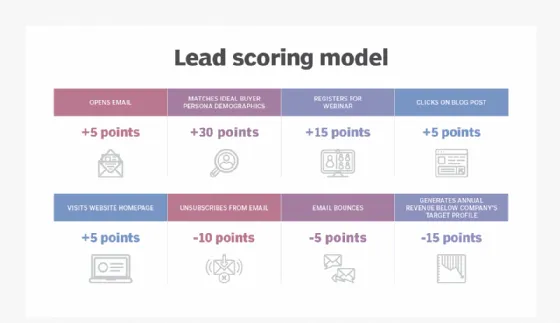
Lead scoring assigns numeric values to leads based on their behavior and profile data to prioritize them according to their likelihood to convert.
- Behavioral Scoring: Assign points for actions that indicate interest, such as website visits or email engagement. Companies using advanced lead scoring see a 77% increase in lead generation ROI, according to Marketo.
- Demographic Scoring: Points are also assigned based on demographic information that matches the ideal customer profile. Data from HubSpot suggests that leads that closely match the ideal customer profile have a 30% higher conversion rate.
- Time Decay: Incorporate time decay to decrease points for inactivity over time, ensuring the focus remains on engaged leads. Implementing time decay has been shown to increase contact rates by up to 25%.
4. Fit and Interest Matrix
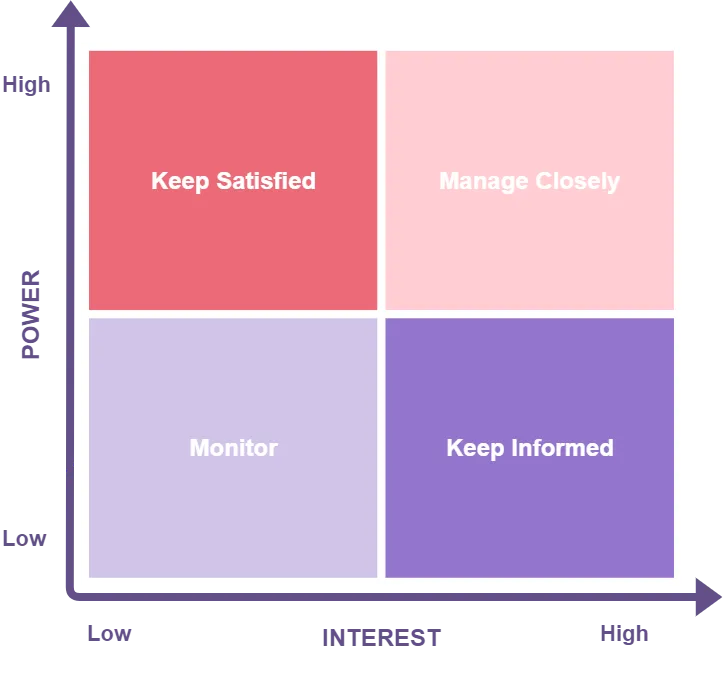
This methodology categorizes leads based on their fit (how well they match the ideal customer profile) and their interest (level of engagement with your brand).
- High Fit, High Interest: These are your ‘hot leads’. Investing in these leads has been shown to yield the highest ROI, with companies reporting up to 60% conversion rates for this segment.
- High Fit, Low Interest: Potential customers who might need nurturing. Targeted content marketing to this group can increase engagement rates by 50%.
- Low Fit, High Interest: Interested but may not be the best match. Tailored engagement strategies can convert up to 20% of these leads into opportunities.
- Low Fit, Low Interest: Lowest priority. However, strategic long-term nurturing can occasionally convert these into viable leads.
Concluding Thoughts on Qualifying Questions
In conclusion, using the right sales qualifying questions is key to pinpointing high-value prospects efficiently. The 30 questions we've outlined serve as a comprehensive guide to understanding a prospect's needs, budget, decision-making process, and more.
These questions aren't just about gathering information; they're about actively listening to the responses and leveraging this insight to refine your sales approach. By honing in on the most promising leads, you optimize your sales efforts, improve conversion rates, and ultimately achieve greater sales success. Keep these questions at the ready, adapt them as needed, and watch your sales process become more effective and your outcomes more successful.
Further Reading
To deepen your understanding of sales strategies and to continue refining your sales process, we recommend exploring the following resources. These articles provide valuable insights and practical tips to further enhance your sales team's effectiveness:
- Navigating Sales Objections: A Comprehensive Guide: Learn to navigate and overcome sales objections with confidence. This article provides strategies and insights to turn objections into opportunities, enhancing your sales approach and results. Read more.
- Mapping Sales: A Step-by-Step Process for Success: Dive deeper into the importance of sales mapping and discover how it can improve your sales process. This guide offers practical steps and techniques for effective sales mapping, helping your team achieve better clarity and efficiency. Read more.
- The Art of Sales Lead Generation: Strategies and Tips: Uncover the secrets to successful sales lead generation with this insightful article. Learn about the latest strategies and tips to attract high-quality leads and significantly improve your sales results. Read more.
- Inside vs. Outside Sales: Understanding the Difference for Strategic Advantage: Explore the differences between inside and outside sales, including the unique advantages and challenges of each. This article provides a detailed comparison to help you determine the best approach for your business. Read more.
- Effective Web Design Cold Email Strategies: Discover how to craft compelling cold emails for web design services that get responses. This guide includes tips, strategies, and examples to help you improve your outreach and win more web design projects. Read more.
These resources offer comprehensive guides and strategies to refine every aspect of your sales process, from handling objections to generating leads and understanding the nuances of inside versus outside sales. Delve into these articles to build on the foundations of your chosen sales methodology and drive sustained success for your sales team.

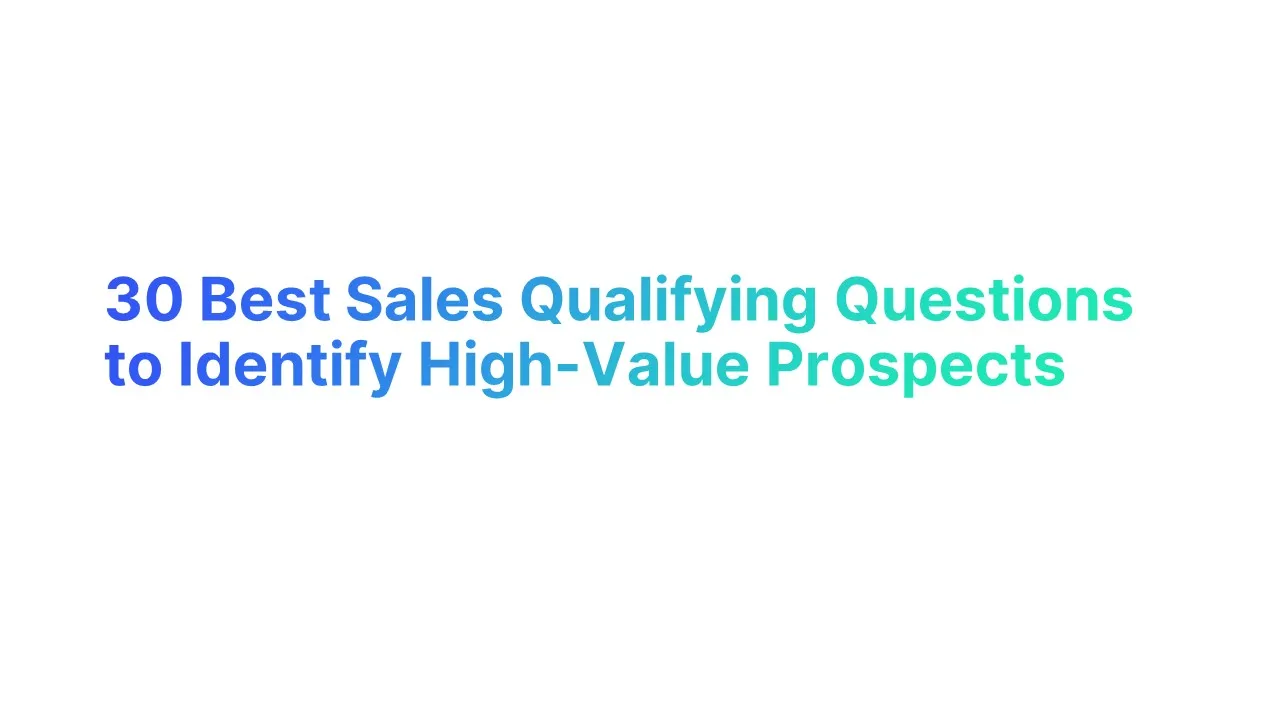



.jpg)

.jpg)
